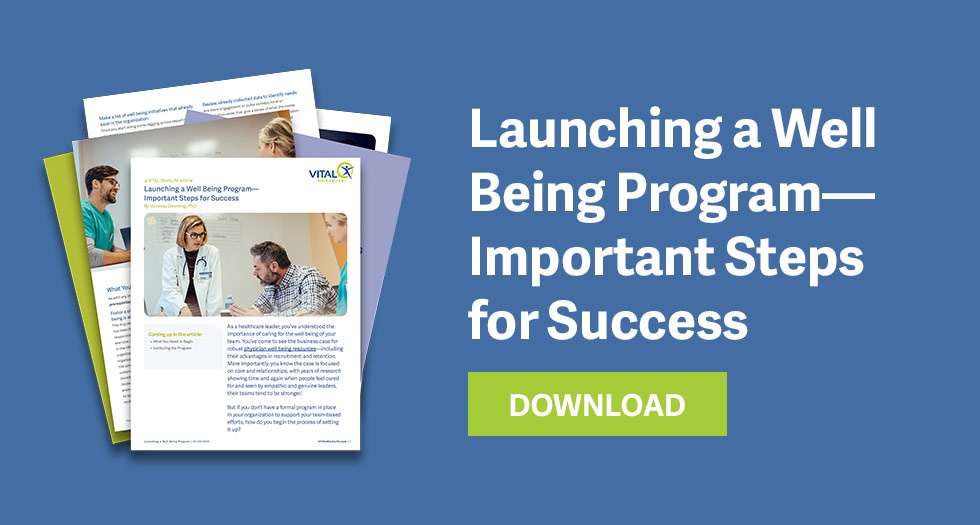Natalia Dorf-Biderman, MD is Wellbeing Committee Co-Chair and CDI Physician Advisor at Methodist Hospital, Park Nicollet/Health Partners in Minneapolis, MN. The internist and hospitalist has held a number of leadership roles at Methodist and in the community, developing programs to support clinicians' practice and prevent burnout. I received input from Natalia to help add more perspective to launching well being programs in healthcare organizations. Her advice? Organizations setting up well being programs should center their efforts on honest and open communication among stakeholders.
 Agility, Creativity, Open Mindedness
Agility, Creativity, Open Mindedness
At the beginning of the pandemic, Dr. Dorf-Biderman was a member of a team of people who had done work in the well being space. Their goal was to begin creating initiatives at the hospital to meet the formidable challenges to staff well being the COVID-19 crisis presented.
“After significant activity during the first year of the pandemic,” she says, “our team partnered with our executive leaders and recognized the work needed a formal structure. That’s when our well being committee was formally established.”
Building support for Methodist’s well being initiatives, she says, “has been an interesting road. Knowledge, efforts and acceptance are evolving, and this evolution has dramatically accelerated in the last three pandemic years. Still, those of us leading have to be agile, creative and open minded to meet people and leaders where they are at.”
Communication and Normalization
One of the biggest surprises about setting up the program, explains Dr. Dorf-Biderman, is how much communication was needed to build awareness of the program but also to ‘make it okay’ and foster an environment where staff will make use of the resources. Healthcare workers, especially physicians, have historically been praised for keeping going, even beyond what’s humanly possible. She noted there’s a tendency to tough it out—because they are always ‘okay.’ They had to get creative to get the message out there. Engaging with their communications team and telling the stories behind all the resources available helped normalize the conversation and open the door for people to use them.
Another surprise, she added, was how much support for the initiatives can be discovered—often in unexpected quarters—if leadership promotes honest and respectful conversations about why well being matters.
Physician-Leader Communication and Understanding
Physicians need to understand the needs and goals of leadership too. “Ultimately, executive leadership is of the utmost importance in making well being initiatives work,” Dr. Dorf-Biderman suggests. “Understanding the drivers of executive decisions and the outcomes at which these decision-makers are aiming will accelerate support in all areas.”
Wondering where to start? For more on the prerequisites for setting up an effective well being program, read our article Launching a Well Being Program—Important Steps for Success.



